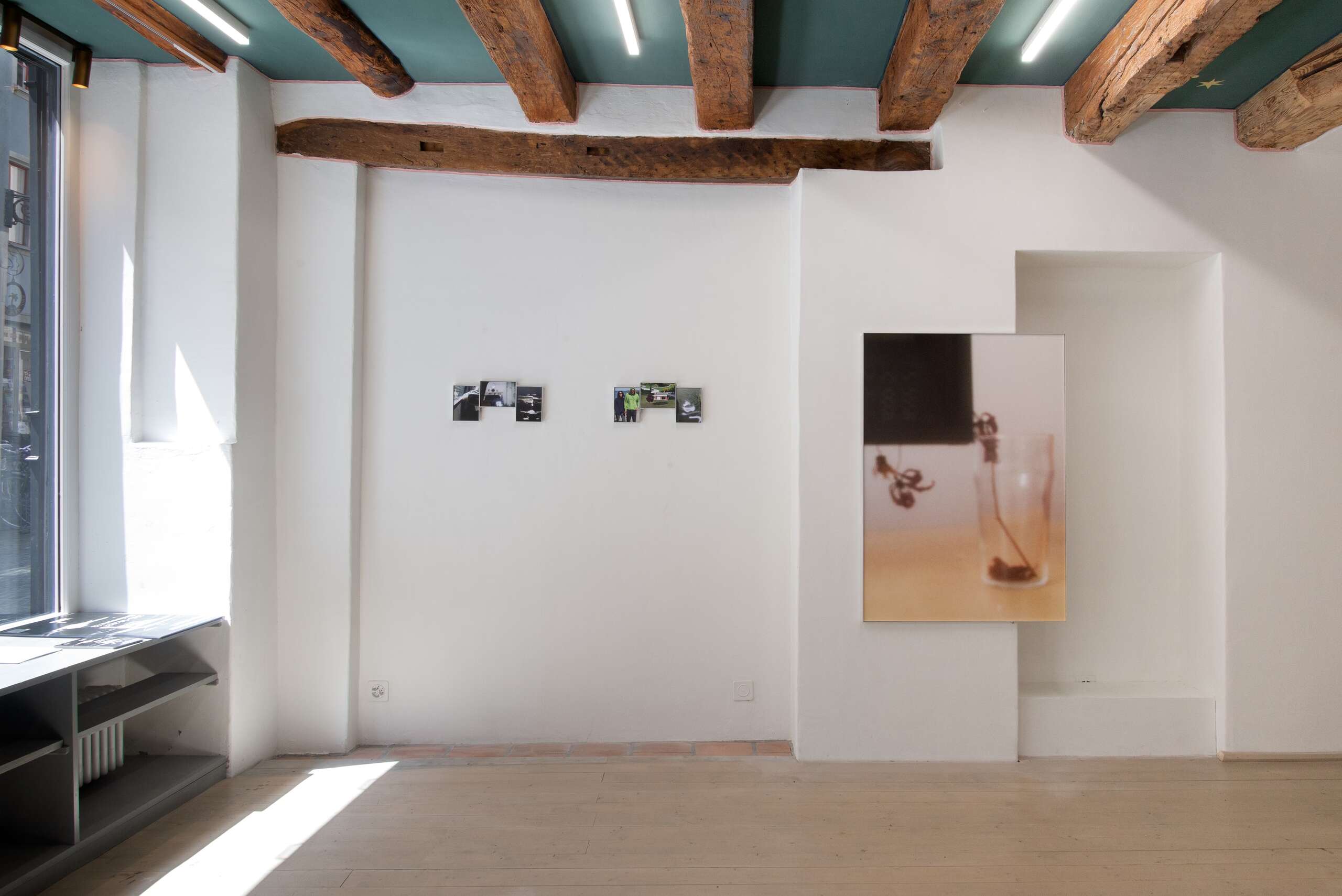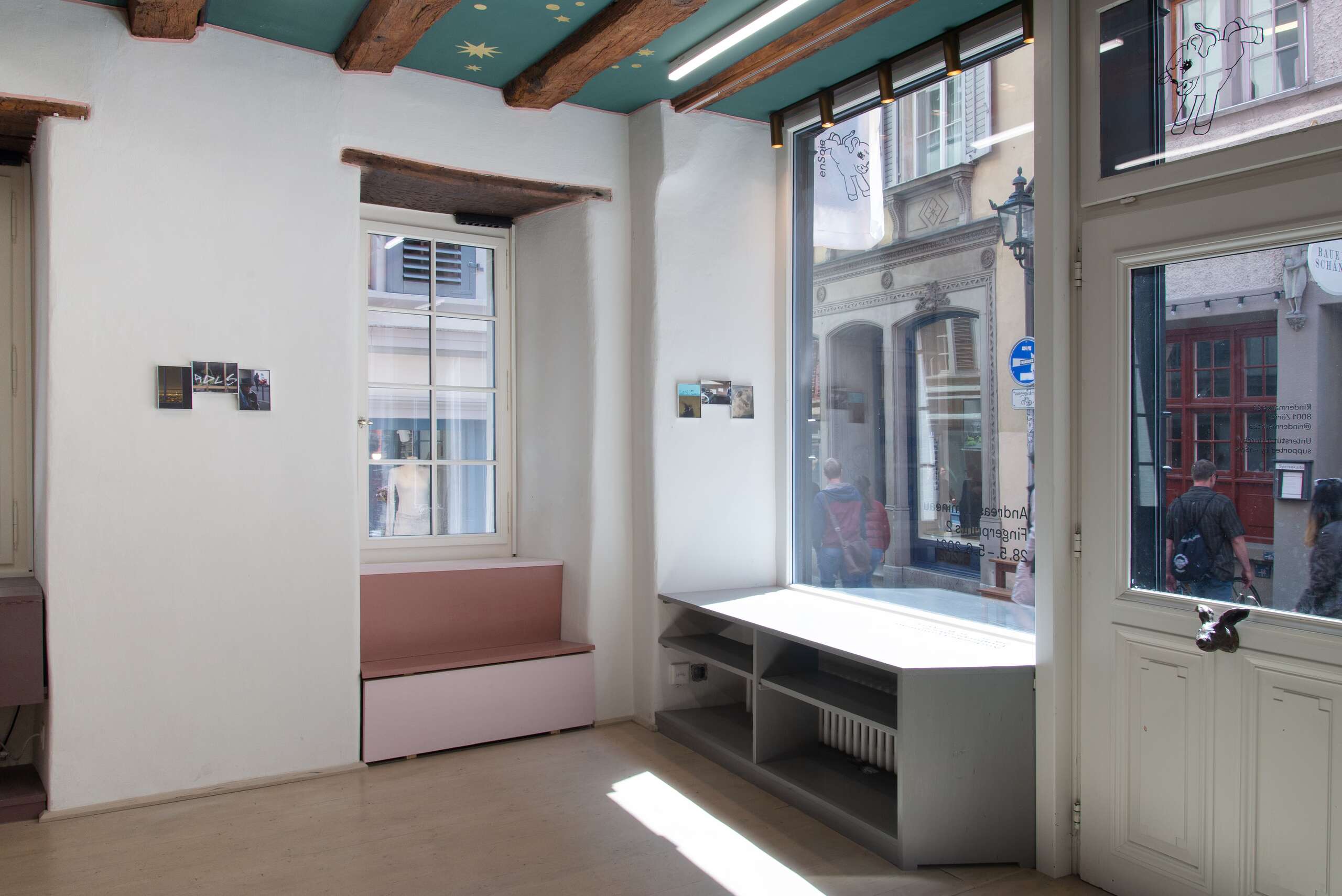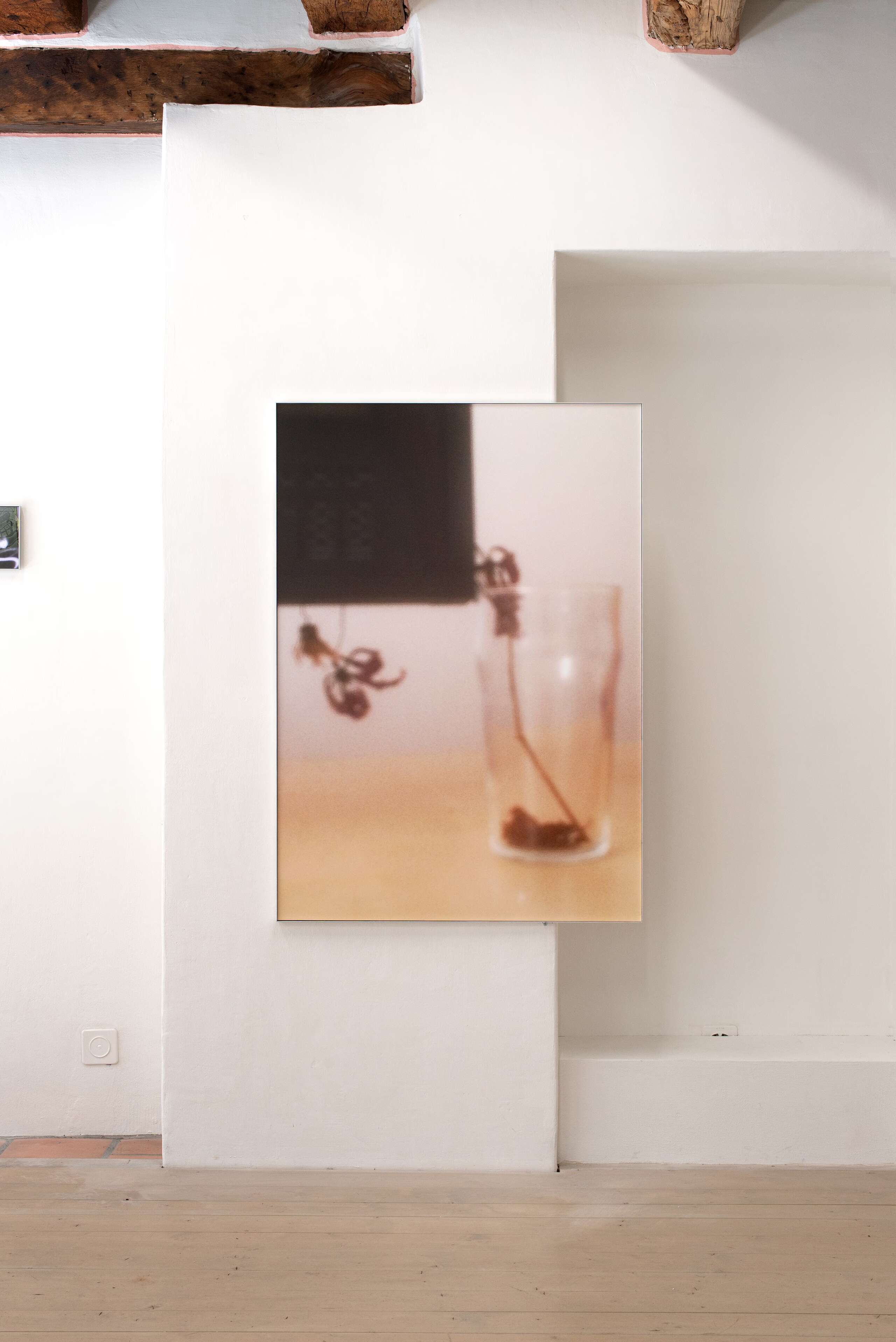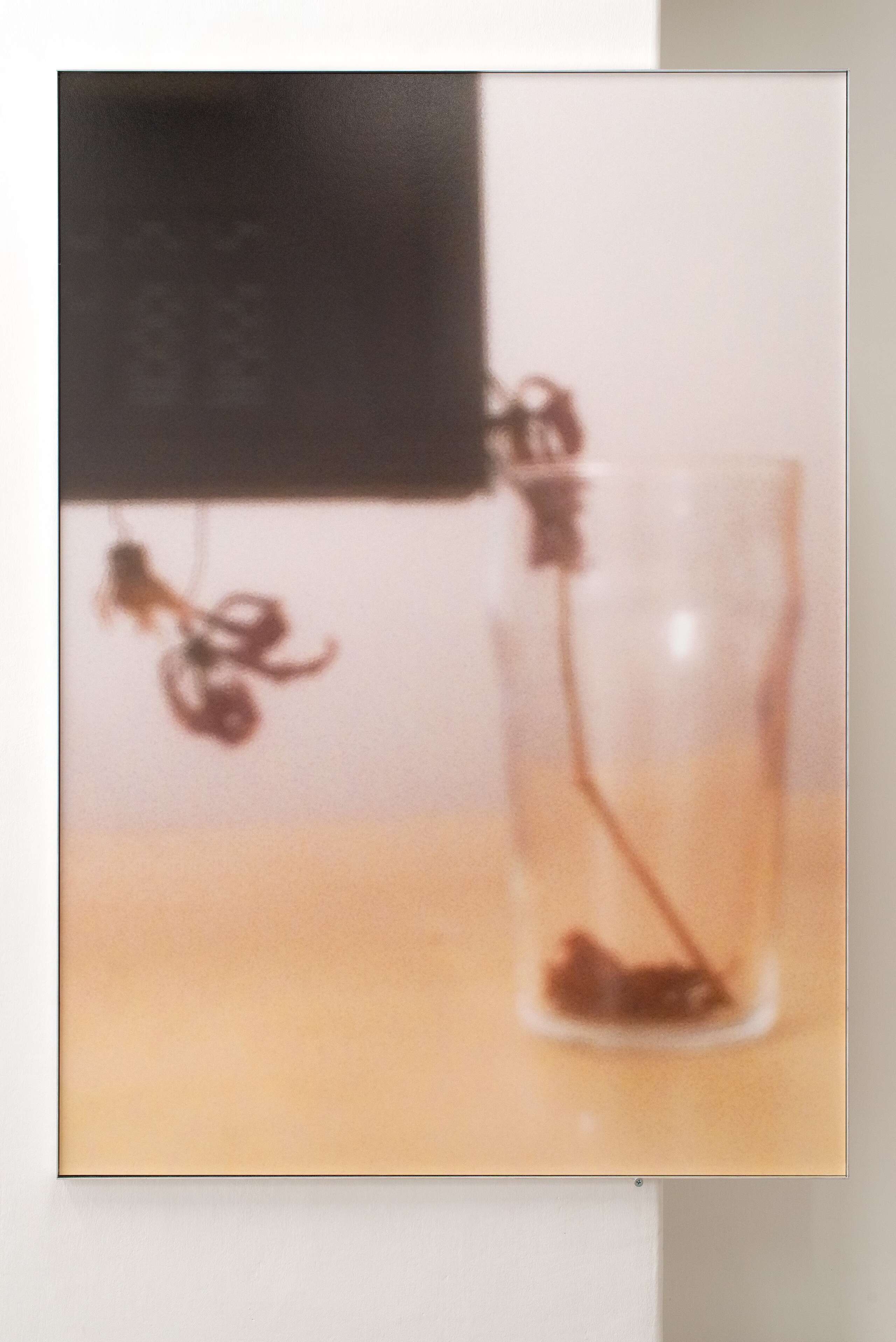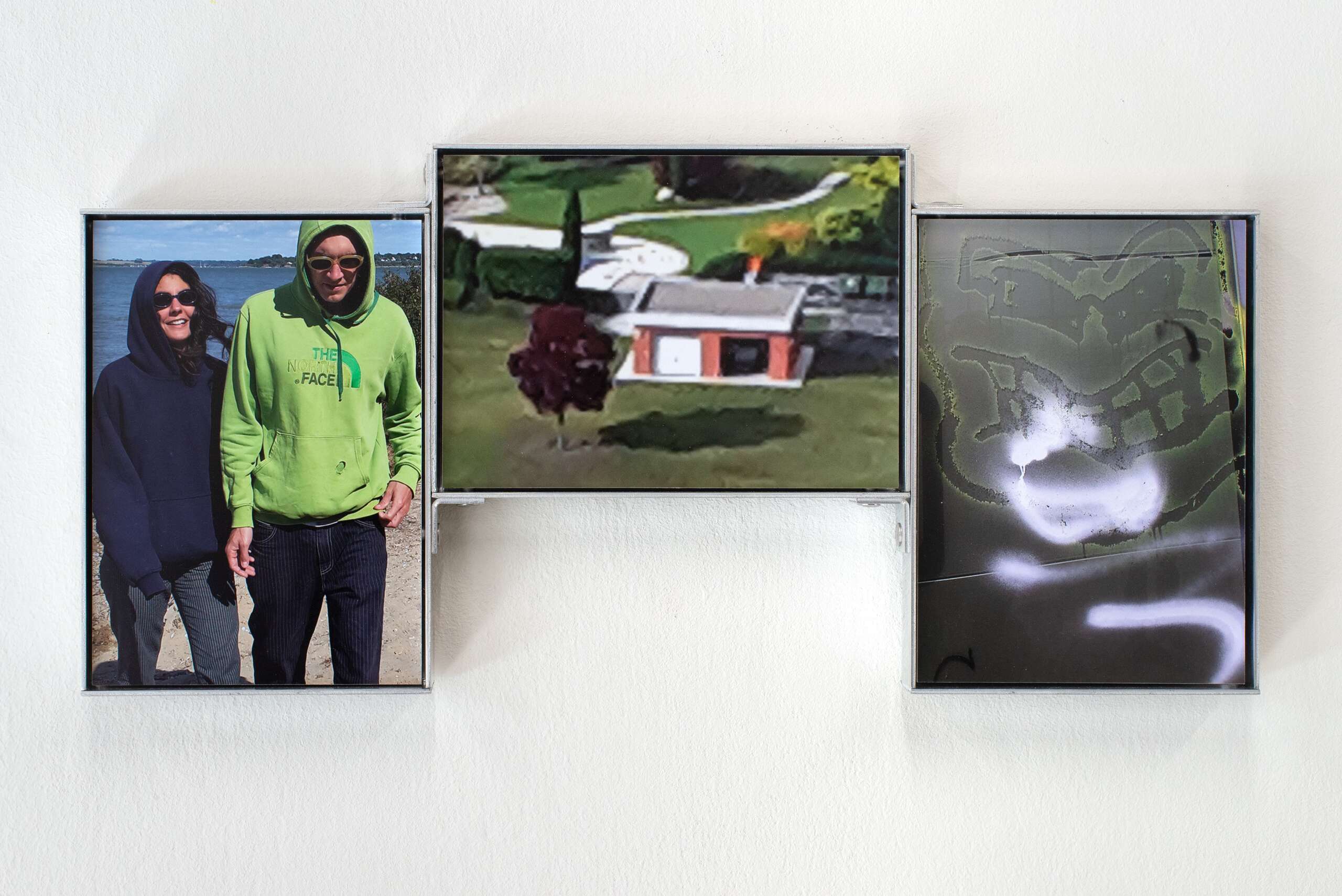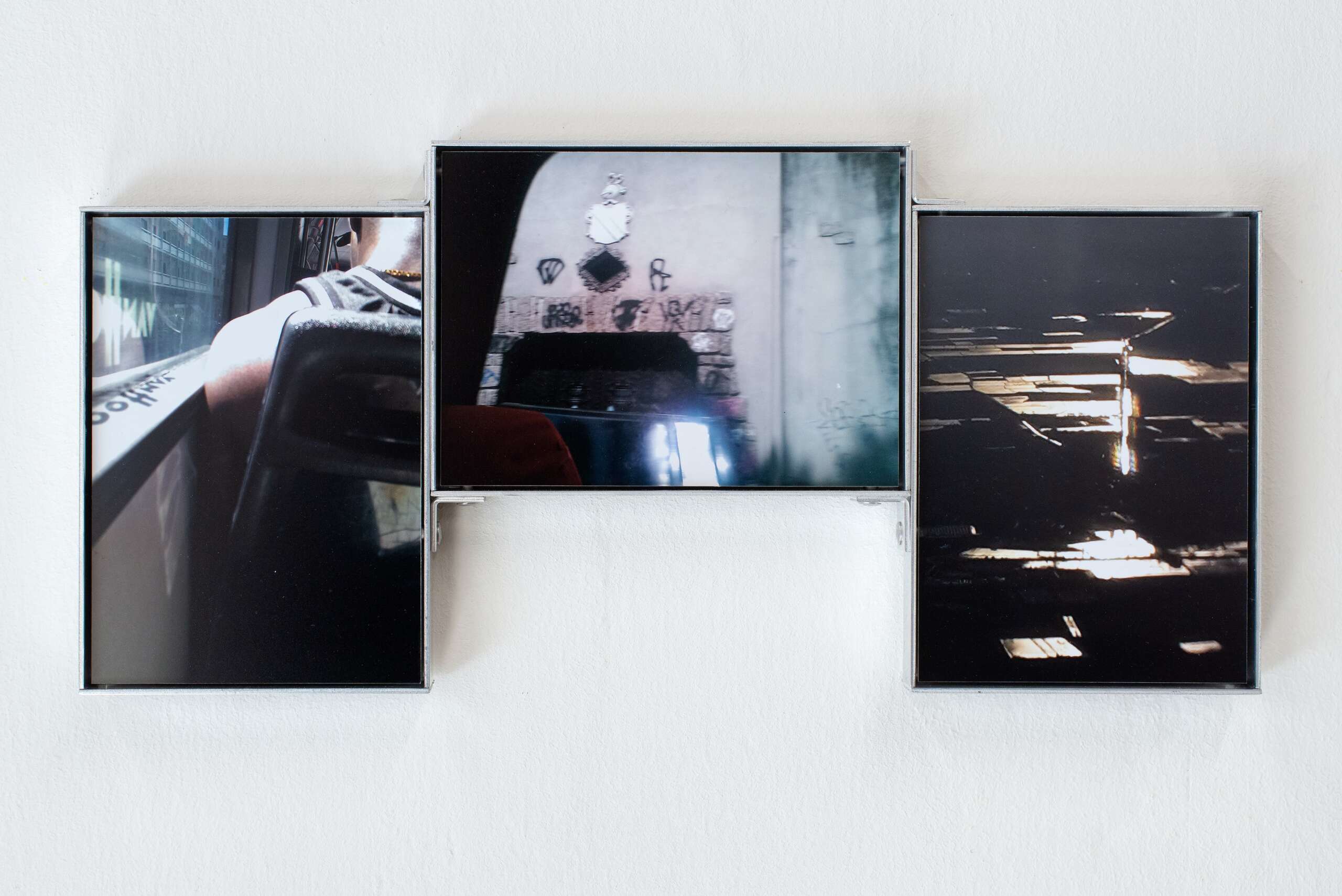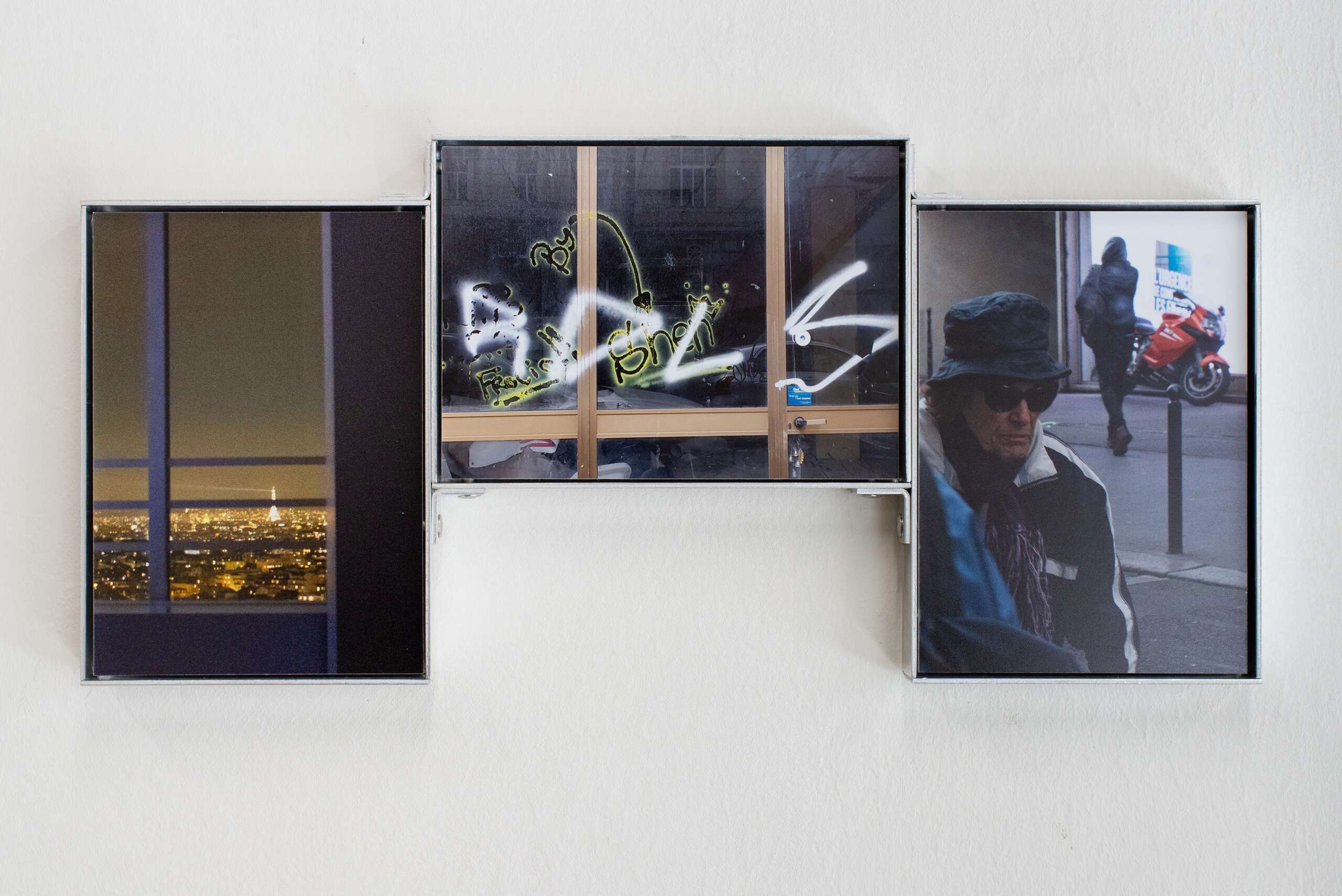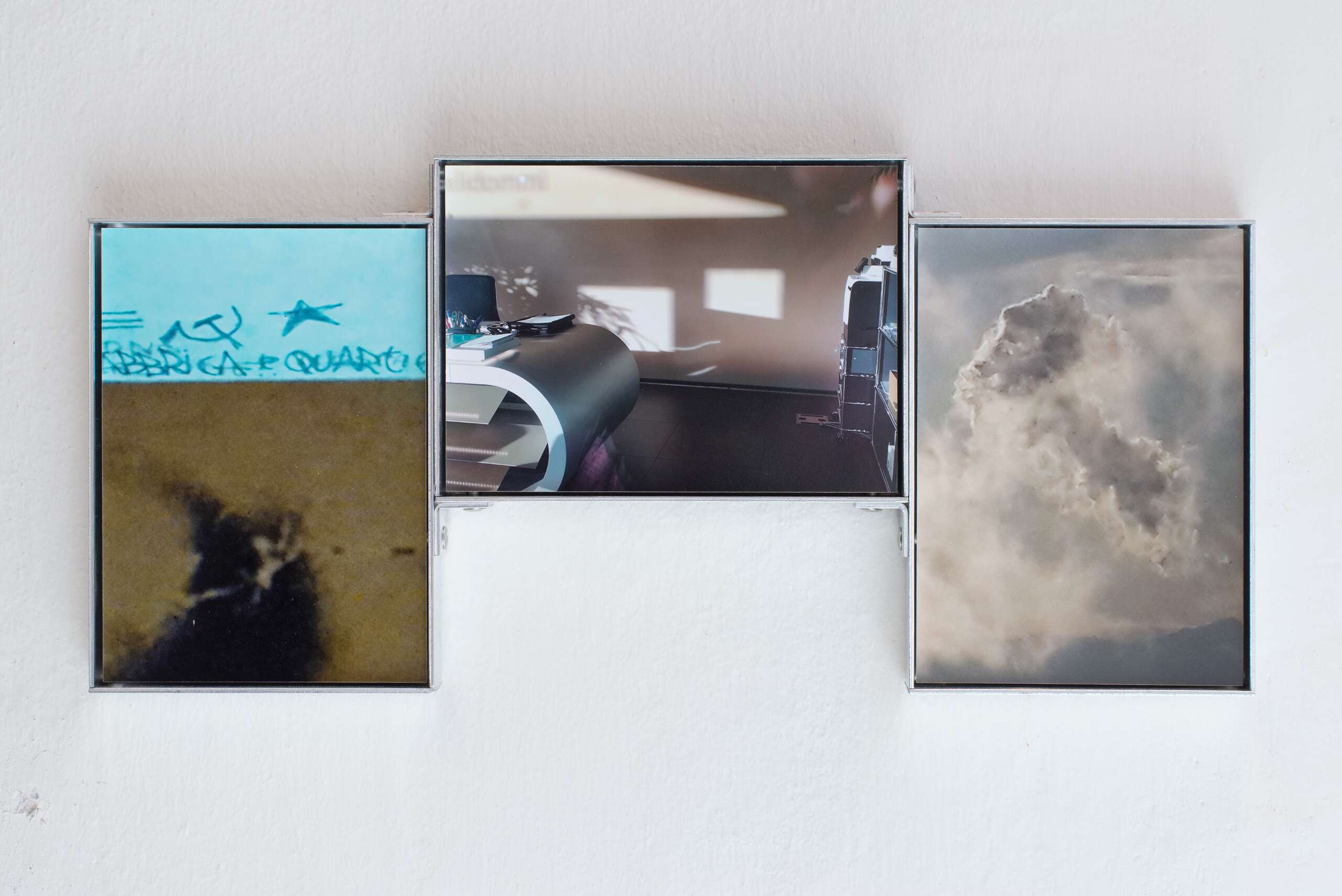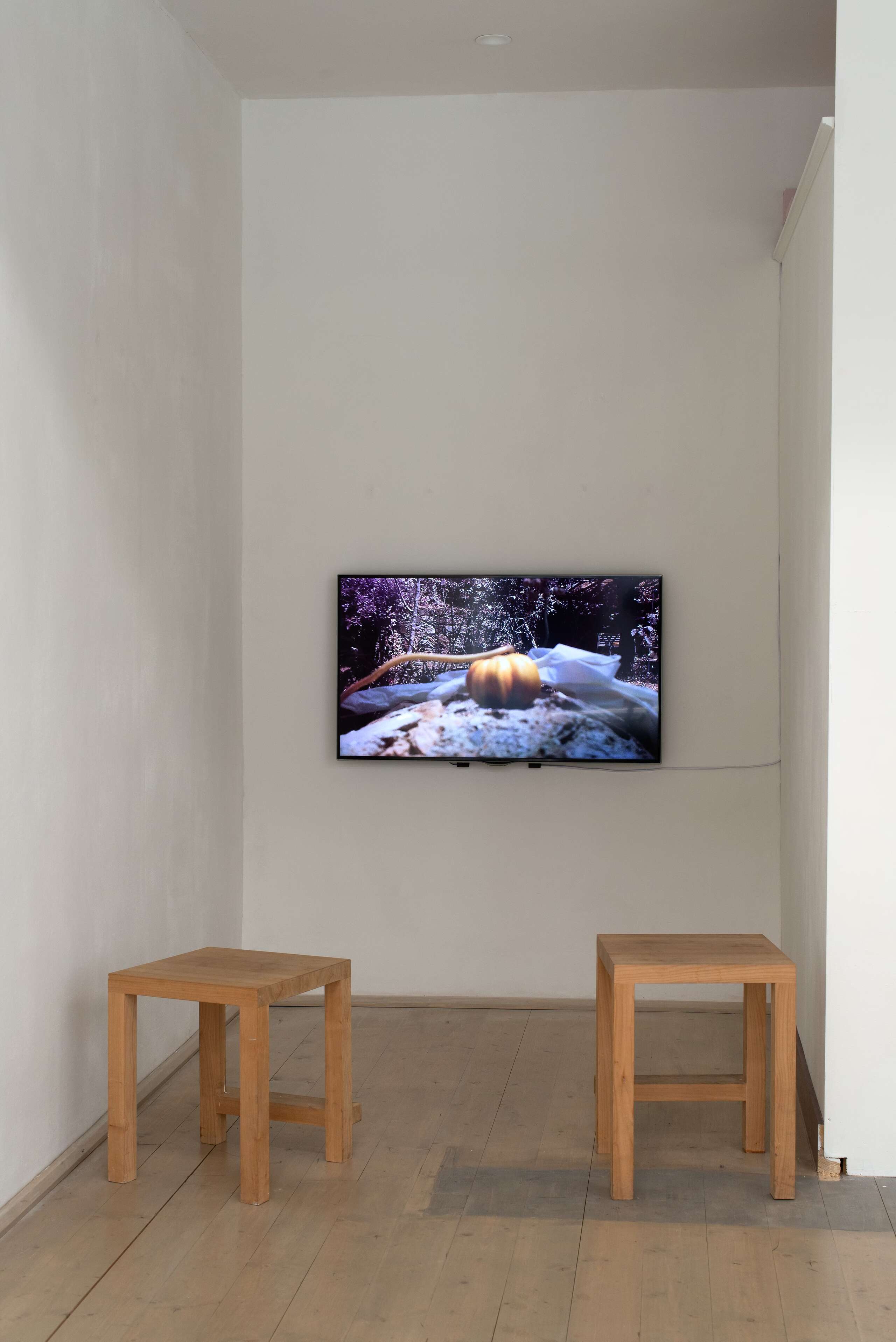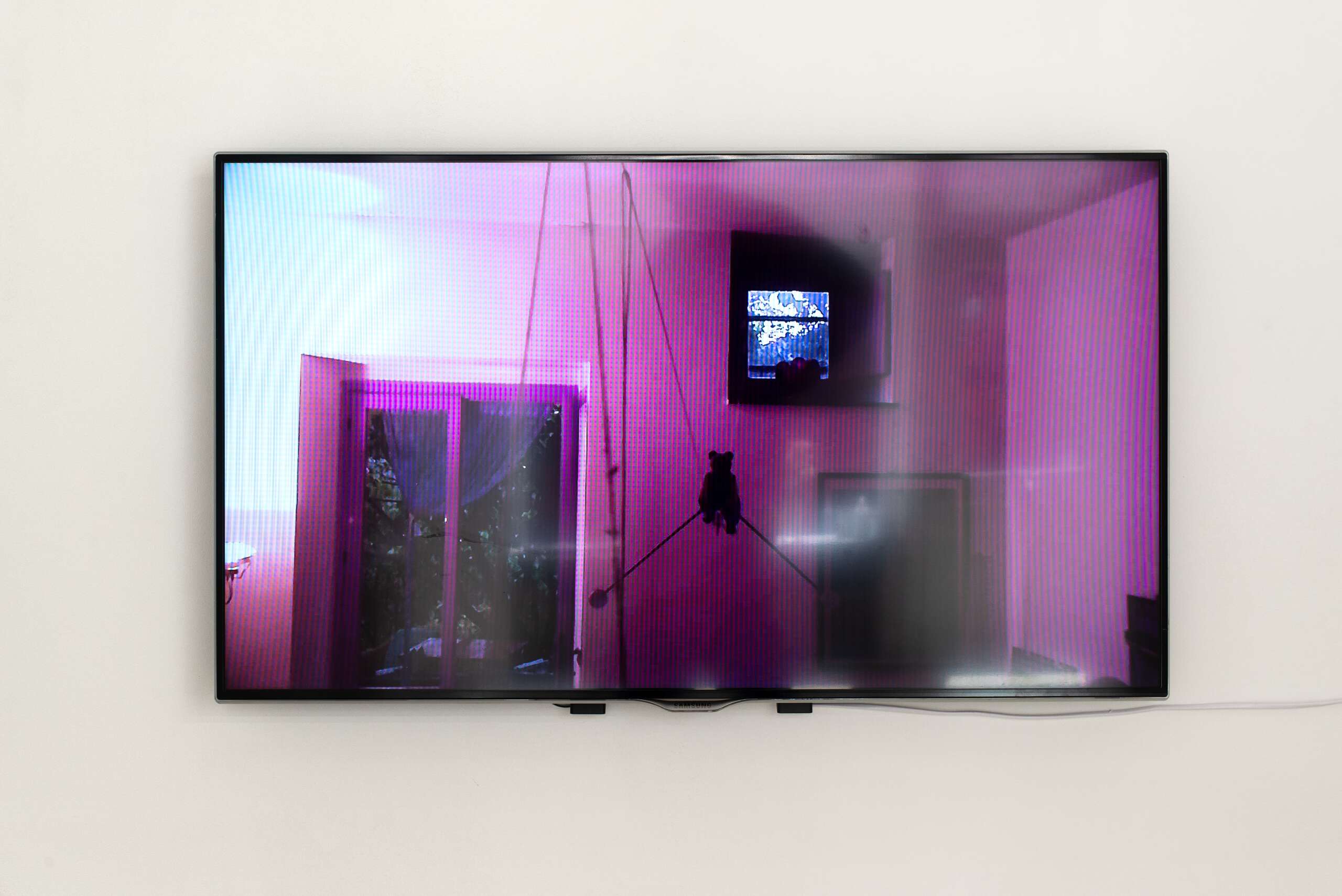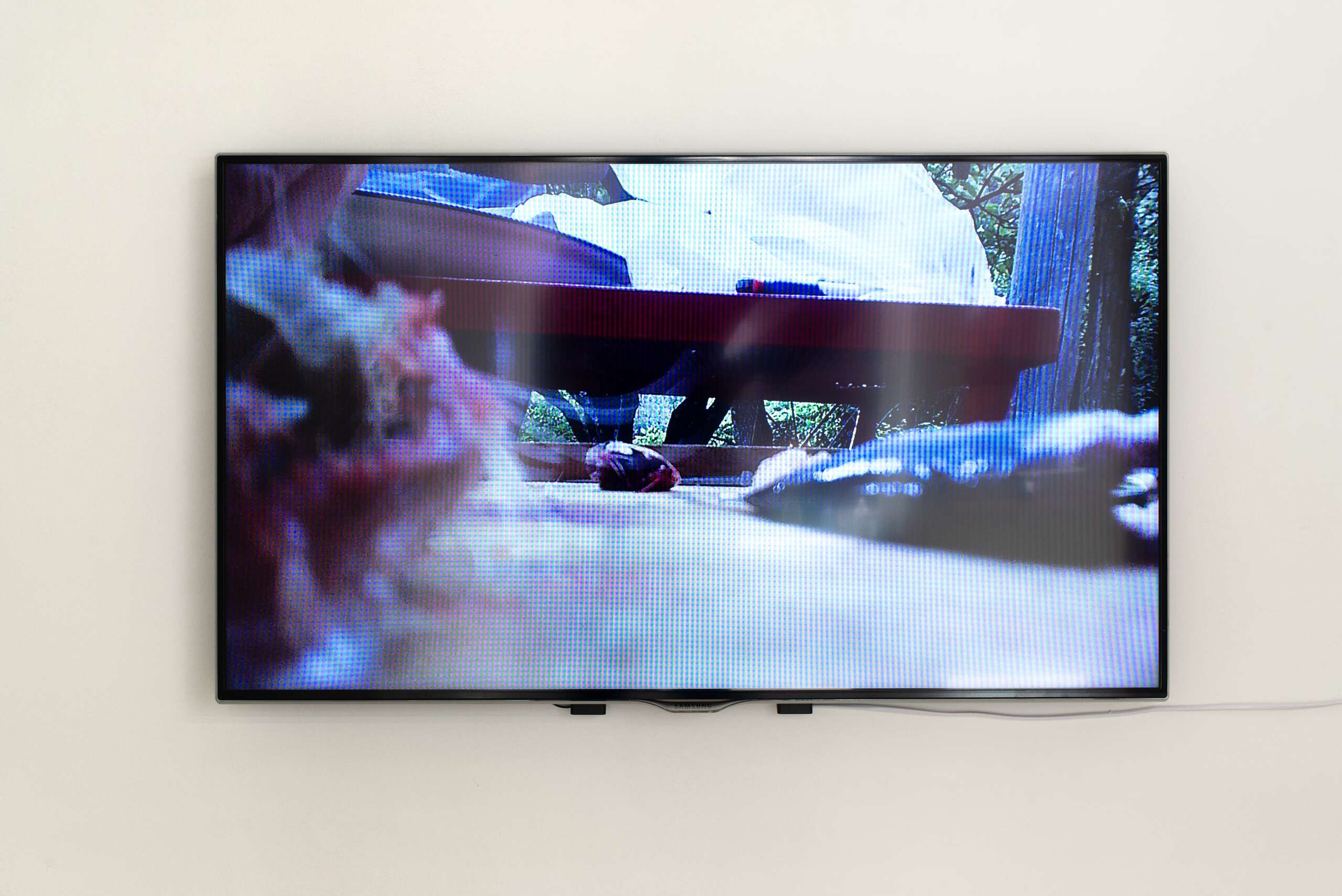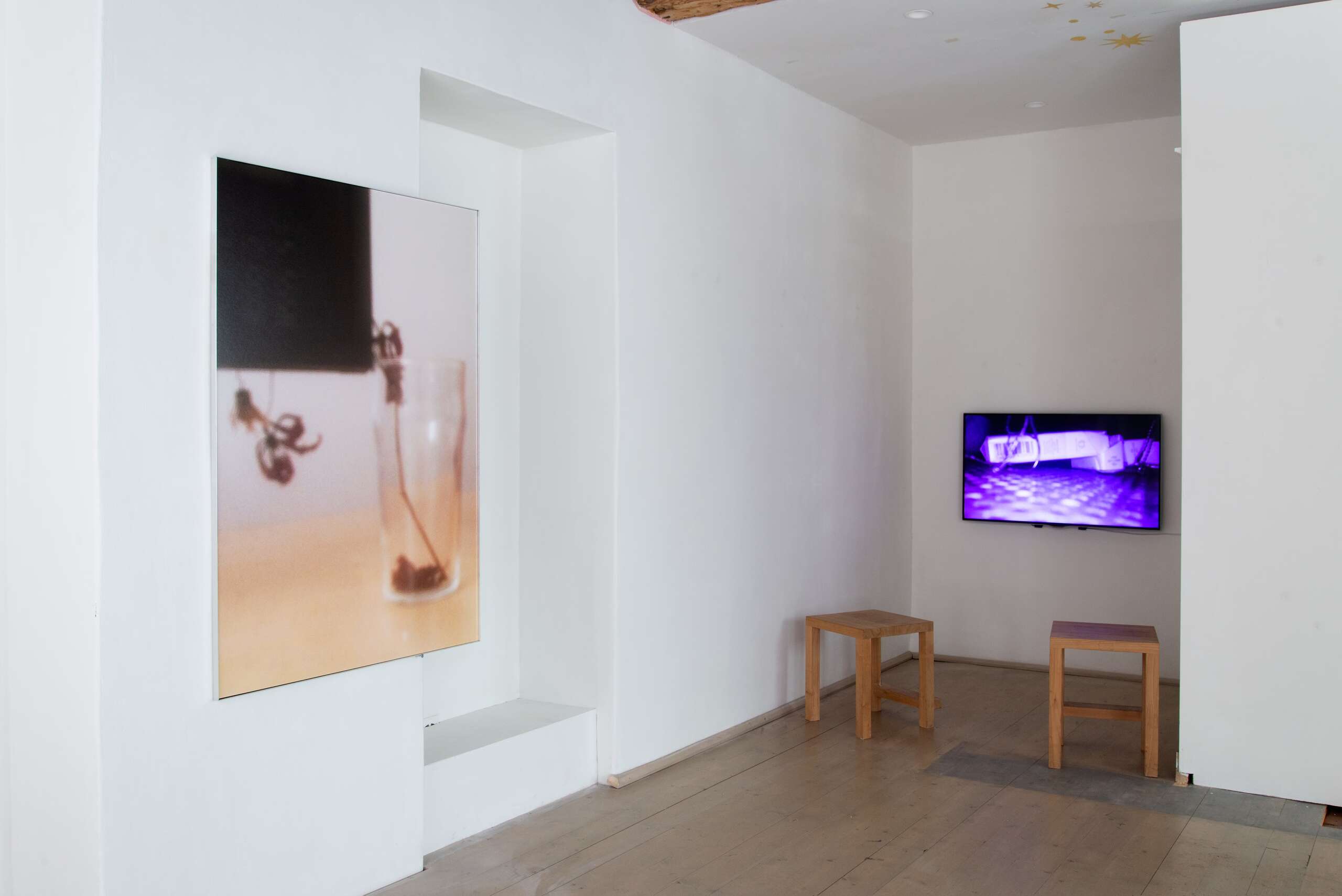Andreas Lumineau
Andreas Lumineau
Fingerprints 2
28. 5.–5. 6. 2021
Exhibition:
28. 5.–5. 6. 2021
Open daily from 14 bis 18 Uhr
Poster:
42 cm × 59,4 cm
Edition of 30
CHF 25.-
His heart and this sensibility draw him irresistibly toward the city’s bright lights, beautiful women, fashion, luxury, its play of dazzling surfaces and radiant scenes; meanwhile his marxist conscience wrenches him insistently away from these temptations, instructs him that this whole glittering world is decadent, hollow, vicious, spiritually empty, oppressive to the proletariat, condemned by history.[1]
The solo exhibition Fingerprints 2 is an exceptional starting point to write about Andreas Lumineau's work. Andreas is my brother and I am writing this text from the perspective of someone who appreciates Andreas' work, but also has a personal relationship with the artist, which hopefully makes for an interesting perspective.
In the works, we find ephemeral things transposed into a fixed state. As if the pause button is pressed during a film, resulting in an unpredictable composition of images. However, movement is omnipresent. Whether it is a single image, a still life, a combination of three or more images: everything moves. In the process, Andreas becomes one with normal life, directing attention to things that I would probably never have noticed. I think that Andreas' images also show what images normally don't show. It is not about the strangeness of everyday life but about everyday life, alone, in all its states. Some of his works cannot be described exhaustively. Not everything is recognisable. There are dark spots, shadowy areas, vanishing lines, blurs etc. The camera as a tool to protocol the poetry of everyday life. Capturing moments that interrupt for a moment the barbarity of all this passing each other by (I owe this thought to Helene Hegemann[2]). Technology takes a subordinate position here (what do I care about ISO scales or focusing). Passengers on a bus ride, a cloud formation, moving people, earth surfaces and facades reshaped by humans, an empty glass placed on a table, a sunset. The works are characterised out of Andreas' fascination of his environment and our human nature. By the intense and unpredictable weather fluctuations. The random choreographies of anonymous individuals crossing each other indifferently. In his works, all the values of our civilization come together and are questioned.
For his exhibition at Helmhaus Zürich 2020 as well as this show at Rindermarkt 23, Andreas’ images tended to work within the form of the triptych. In the current case, they are much smaller and in the format of postcards. It is the juxtaposition of three depictions that corre-spond to different units of action, i.e. that are separated in time or space. As office space and day sky clash with each other across the triptych, Andreas marries deliberate approach with intuition. The scenarios hold defined narratives but they immediately disperse. The narratives meet to better disperse themselves, in lightness. To return to the book quoted at the beginning: All that is solid melts into air.[3]
‒ Pierre Lumineau
[1] Marshall Berman über Walter Benjamin in: Marshall Berman, All That Is Solid Melts into Air, S. 146, Verso, 2010
[2] Helene Hegemann, Bungalow, S. 257, Hanser Berlin, 2018.
[3] Der Titel des Buches ist dem Manifest der Kommunistischen Partei von Karl Marx und Friedrich Engels entnommen.
